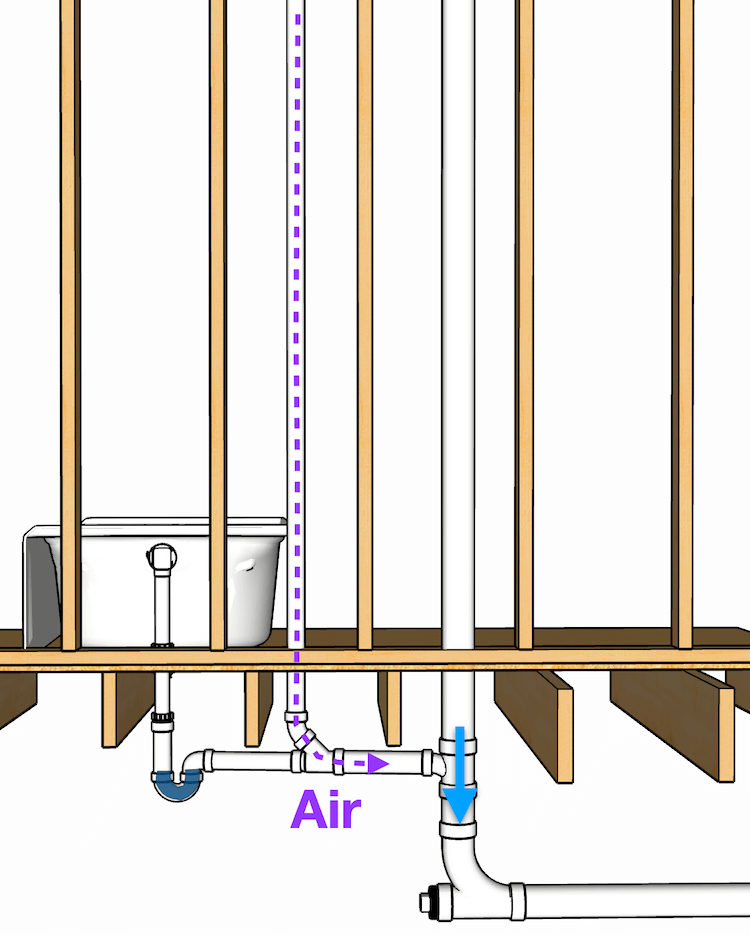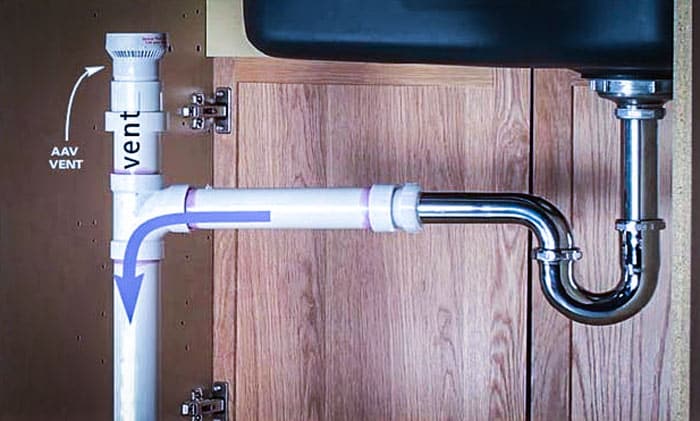Why Proper Ventilation Supports Your Plumbing System
Schedule Now!Just how do you actually feel when it comes to Why Plumbing Air Vents Are Important?

Proper ventilation in plumbing systems is typically ignored, yet it is critical for keeping the capability and safety and security of your home's pipes. Ventilation helps regulate atmospheric pressure, protect against the accumulation of dangerous gases, and guarantee the efficient elimination of waste. In this guide, we will check out the relevance of appropriate pipes air flow, how it works, and the benefits it gives your pipes system.
Exactly How Ventilation Works in Plumbing Equipments
Air Pressure Regulation
Correct ventilation keeps balanced atmospheric pressure within the pipes system. When water flows with pipelines, it displaces air. Without sufficient air flow, this variation can create unfavorable stress, leading to slow down drains pipes or siphoning of water from catches, which can create undesirable odors to leak right into the home.
Preventing Sewer Gas Accumulation
One of the most important features of pipes vents is to stop sewage system gases, such as methane and hydrogen sulfide, from gathering within the home. These gases can posture significant wellness dangers and are extremely flammable. Vent pipelines permit these gases to get away safely outside.
Assisting in Waste Removal
Air flow aids in the efficient elimination of wastewater by preventing airlocks in the water drainage system. When air can flow openly with the vents, it permits water and waste to stream smoothly through the pipelines, reducing the threat of obstructions and backups.
Advantages of Appropriate Air Flow
Enhanced System Performance
Appropriately aerated plumbing systems run more effectively, with less clogs, faster draining, and much less strain on the pipelines. This performance prolongs the life expectancy of the plumbing system.
Improved Air Top Quality
By protecting against drain gases from entering your home, appropriate ventilation adds to better interior air high quality, making your living environment healthier and extra comfortable.
Protecting Against Water Damage
Adequate ventilation helps stop water from being siphoned out of catches, which can bring about drain gases getting in the home and creating water damages with time.
Actions to Guarantee Appropriate Ventilation
Consulting Plumbing Codes
Constantly consult local plumbing codes when making or modifying your pipes system. These codes give the required standards for correct airing vent and ensure your system satisfies security criteria.
Normal Inspection and Maintenance
Routine assessments can aid recognize potential ventilation issues before they become major problems. Upkeep jobs, such as cleansing air vent pipelines and looking for obstructions, are necessary for maintaining the system in good working order.
Expert Setup
For new installations or significant alterations, it's smart to employ a professional plumbing. They have the know-how to make sure the ventilation system is correctly made and set up according to code.
Recognizing Ventilation in Plumbing
Ventilation in pipes refers to the network of pipes that enable air to stream via the drainage system. These vents offer multiple objectives, including controling air pressure within the pipelines, avoiding drain gases from getting in the home, and aiding in the smooth circulation of wastewater.
Sorts Of Plumbing Vents
Main Heap Vent
The major stack air vent, additionally known as the vent stack, is the main air vent in a pipes system. It extends from the main drain align via the roof, enabling gases to get away and fresh air to get in the system.
Branch Vent
Branch vents attach to the major pile air vent and offer specific components, such as sinks, commodes, and showers. These vents make certain that each component has ample air flow to operate effectively.
Air Admission Shutoff (AAV).
An Air Admittance Valve (AAV) is a one-way valve that allows air to enter the plumbing system without the requirement for a standard vent pipe extending with the roofing. AAVs are commonly used in remodellings or areas where mounting a standard air vent is not practical.
Indicators of Poor Air Flow in Plumbing.
Slow Draining Fixtures.
If your sinks, bathtubs, or bathrooms are draining pipes slowly, maybe an indication of inadequate ventilation. Poor air flow can develop a vacuum impact, making it hard for water to drain properly.
Gurgling Sounds.
Gurgling sounds coming from drains are frequently a result of air being drawn via water catches because of unfavorable stress in the pipelines. This is a clear sign of not enough ventilation.
Unpleasant Odors.
Sewage system odors inside your home are a red flag that your plumbing system is not correctly ventilated. This could mean that sewer gases are not being appropriately aired vent outside, resulting in potentially dangerous conditions.
Usual Air Flow Mistakes.
Insufficient Vent Sizing.
Making use of small vent pipes can bring about poor air flow and stress inequalities in the system. It's essential to make use of vents that satisfy the particular requirements of your pipes system.
Improper Vent Positioning.
Placing vents too much from the fixtures they offer can minimize their effectiveness. Correct positioning guarantees that air can move easily and efficiently through the system.
Disregarding Code Requirements.
Building ordinance offer particular standards for pipes air flow. Disregarding these codes can cause a system that falls short to function appropriately and might cause costly repairs or health hazards.
Conclusion.
Appropriate air flow is a critical part of any pipes system, ensuring that it functions efficiently and safely. By comprehending the significance of air flow, identifying the indicators of inadequate ventilation, and taking steps to keep your system, you can stop expensive issues and shield your home's air high quality.
4 Things You Should Know About Your Plumbing Vents
What Plumbing Vents Are
Also called a vent stack, a plumbing vent is a vertical pipe attached to your drain line that runs through your roof. The plumbing vent pipe, or plumbing air vent, removes gas and odors from your plumbing system and allows fresh air to enter the pipes, helping the water to flow out of the drain pipes.
What Plumbing Vents Do
Plumbing vents have two basic functions. One of which is to allow unpleasant smelling wastewater and sewer gasses to escape your plumbing system instead of entering your home. Plumbing vent pipes are typically located on roofs, away from windows, to ensure the fumes exit the home completely.
The other function of the plumbing vent is to move fresh air into your plumbing system. This helps move water through every plumbing fixture in your house, like toilets and sink drains. Think of the way in which you need to let a little air into the bottle as you pour soda in order to make the drink flow smoothly.
Different Types of Plumbing Vents
True vent: This is the most common vent option. In simplest terms, a true vent is a vertical pipe attached to your drain line that exits through the roof. They often function as the main vent that other fixtures can connect to. Re-vent pipe or auxiliary vent: Attached to the drain line near specific plumbing fixtures, re-vent pipes run up and over to connect to the main vent. Common vent: Two plumbing fixtures installed on opposite sides of a wall are typically tied into the vent stack using something known as a sanitary cross. Wet vent: This venting option operates as a drain pipe and a vent at the same time. Wet vent drainage systems drain water from one fixture while venting the air from another. Although they’ve been used for over 100 years, wet vent systems have only recently been added to the plumbing code in many areas. If you’re planning on installing one in a bathroom remodel, make sure you check your local code prior to construction. Loop vent: For free-standing fixtures like kitchen island sinks, loop vents are ideal. These vent pipes run under the floor, rise from the P-trap, and create a loop inside the cabinet sink. Air admittance valve: An AAV is a one-way mechanical valve typically installed at the site of the plumbing fixture. AAVs allow venting to occur without having to tie into a larger venting system. They’re ideal for venting fixtures where you aren’t able to easily connect to an existing vent system. Common Plumbing Vent Issues
Although vent pipes typically don’t have water flowing through them, they’re still subject to many typical plumbing issues. For example, clogs are one of the most common problems associated with sewer vent pipes. If your vent pipe gets clogged, all of your plumbing fixtures tied into the vent stack will be affected.
A sink with a slow drain that bubbles and gurgles or a strong sewage smell around your toilet are both indicators that your toilet vent pipe is clogged. Because most vent pipes exit through the roof, old leaves, twigs or even a bird’s nest could be clogging the pipe.
Clogs in your vent pipe system cause a buildup of negative pressure, meaning that water won’t be able to flow out of your home very well. It’s similar to putting your finger over the opening of a straw to trap water inside. When you remove your finger, the water is able to flow out of the straw.
If you suspect you have any blockage in your vent, make sure you have a professional come examine the situation. Left unchecked, a blocked air vent can lead to other costly repairs, like leaks and sediment buildup.
Under Pressure
Pipe vents are essential aspects of a home’s plumbing system. Owning a home means learning about all sorts of things you never put much thought into before. But by understanding as much as you can about the important systems of your home, you can keep those budgets intact and those anxiety levels low.
https://www.homeserve.com/en-us/blog/home-improvement/plumbing-vents/

Hopefully you enjoyed reading our piece about Essential Plumbing Vent Pipes: Understanding Their Role. Thanks for finding the time to browse our article. You should take the time to promote this blog posting if you enjoyed reading it. Thank you for your time. Come back soon.
Call Today